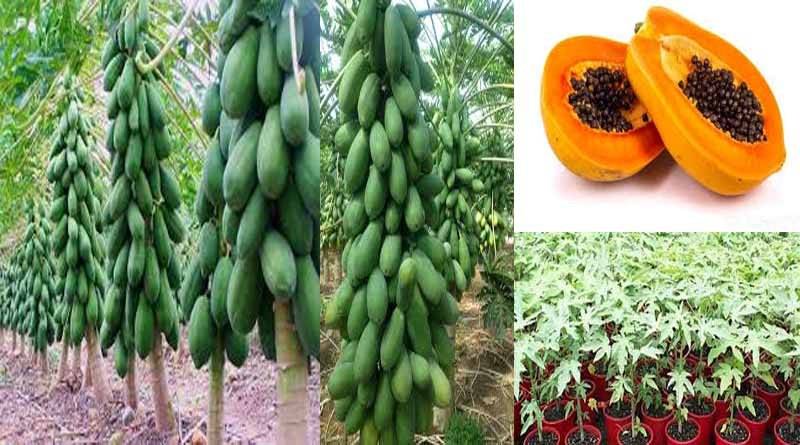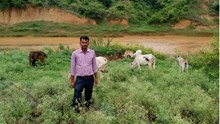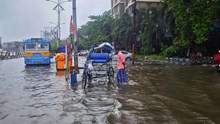
Papaya farming:
Papaya is known as a “carica”, around the world. It is native to the tropical region America mostly Mexico and Costa Rica. Papaya has a special importance due to its high nutritive and medical value.
In the hill station, Mizoram, Tripura and Manipur are the highest production area of the papaya. It is the fifth most commercially yield in India. Around the world, a total of around 6 million tonnes papaya is produced annually. India is the leader in papaya cultivation, annual output of papaya in India is around 3 million tonnes. Some other leading producers are Brazil, Mexico, Indonesia, China, Thailand, Nigeria and Philippines.
What are the varieties of Papaya in Papaya farming?
Honey dew:
It is dioecious with less percentage of male plant and breeds true to the type from seed, semi tall variety, bare fruits low on the trunk heavily. Interestingly, this variety is popular all over India, and is also called as Madhu Bindu.
Sunrise solo:
It is named as ‘solo’ as one man can easily consume one fruit. This variety is from Hawaii with small sized fruits, pyriform and yellowish orange pulp. Its keeping quality is also good.
Coorg honey dew:
The variety produces no male plants. Its plants are either hermaphrodite or female. Fruits borne on female plants are almost seedless and are of excellent quality.
Washington:
These plants are vigorous, stem and leaf stalks are with purple ting, fruits medium to large, round to ovate, sweet, pulp orange color with good flavor.

State wise varieties of papaya:
Andhra Pradesh: Honey Dew, Coorg Honey Dew, Washington, Solo, Co-1, Co02, Co-3, Sunrise Solo, Taiwan.
Karnataka & Kerala: Coorg Honey Dew, Coorg Green, Pusa Delicious & Pusa Nanha.
Jharkhand: Ranchi Selection, Honey Dew, Pusa Delicious & Pusa Nanha.
West Bengal: Ranchi Selection, Honey Dew, Washington, Coorg Green.
Orissa: Pusa Delicious, Pusa Nanha, Ranchi Selection, Honey Dew, Washington, Coorg Green.
Details of Propagation in Papaya farming:
The papaya seeds must be collected from healthy ripe fruits essentially from the plants which are free from pest and diseases. This fruit is usually propagated by seeds. Also, the seeds should be rubbed with ash to remove mucilaginous coating (Aril/Sarcotesta) to facilitate better germination.
But, seeds can be stored for 45 days in an air tight container and stored at 100C. Before sowing, soaking seeds in 100ppm GA solution to enhance germination percentage.
What is the Sowing Process for Papaya farming?
-
Papaya Seeds can be sown in poly bags (22x15cm with 150 gauges) 6 weeks prior to transplanting. The media should be disinfected by using 2 % formalin solution, 4 seeds per polybag should be sown, if it is dioecious variety or 2 seeds, or if it is hermaphrodite variety.
-
Seeds are also sown in raised nursery beds. Around 350 g seeds are needed to plant one hectare area.
-
Germination can take place in 2-3 weeks after sowing. About 6-7 weeks old seedlings are ready for transplanting.
Climate & Soil Requirements for Papaya farming:
One must know that papaya is susceptible to frost. It is tropical in its climatic requirement.
Papaya plant requires warm humid climate and can be cultivated up to an elevation of 1000-1200 m above MSL.
It thrives well at temperature between 38-440C, and optimum range is 22-360C, with a day temperature of 350C and 250C night temperature are most suitable.
It requires fertile soil, deep clayey and calcareous and rocky soils are not suitable and grows well under well drained soil with a pH range of 6-7.

When is the Best Planting Season for papaya crop?
The best season is monsoon (June-July) for papaya planting. You can also do planting in Spring time (February-March) and Autumn (October-November). However, Monsoon is the best season for it.
Spacing between Two Papaya plants in Papaya farming:
Papaya plantation requires the pit size of 1-1.5 cubic feet digging at 1.8 x 1.8m or at 2.4 x 2.4m apart and filled with 30-40 kg FYM with 25gm aldrin 5 % dust will be added to the pits and filled with top soil.
High Density Planting:
For Papaya High Density plantation the pit size of 1-1.5 cubic feet should be dug at 1.2 x 1.2m and filled with 30-40 kg FYM with 25gm aldrin 5 % dust will be added to the pits and filled with top soil.
Flowering in Papaya Farming
In Papaya farming, flowering starts in 5-6 months after planting process. When the sex of the plant is identified, surplus male plants (plants with long 1-11/2 meters flower stalk hang out with small tubular flowers contains stamens only), may be removed keeping one male plant for every 10 female plants, as pollinizers. Remove male plants and maintain1 male plant for every 10 plants after flowering.
Inter Cropping and Inter Cultivation in Papaya Farming:
One can do inter coping in papaya farming. Firstly, grow different short duration vegetables for about six months from planting papaya plants.
Water Irrigation in Papaya farming:
You can use Ring irrigation system for papaya farming. For such a system, irrigate papaya plant in 8-10 days in winter and 6 days in summer.
Harvesting and Storing Papaya:
The average yield is 30-80 tons/ha.
Papaya comes to bearing with 10 months after planting. However, the economic life is only 3-4 years. Fruits are harvested when the fruit turn slight yellow in colour. While harvesting, fruit must not be damaged to prevent rotting. Manual harvesting is commonly practiced.
After that wash the fruits with water or fungicide and pack in boxes with cushioning materials.
After harvesting in about 5-6 days fruit ripens depending upon room temperature. Fruits cannot be stored for more than 4-5 weeks at 00C, and individual fruits are wrapped in the newspaper for ripening
Papain Extraction:
Papain is a proteolytic enzyme which is extracted from the milky latex obtained from immature papaya. Around 400 tons of papain is produced throughout the world. The USA and UK are the major consumers of papain.
Procedure: The immature fruits of 90-100 days old are used for extraction of milky latex by giving 4-6 cuts of about 2mm depth, the latex is collected from 5-6 tapping and sieved the latex and dried in sun or in vacuum shelf dryer. The quality and grade of papain is determined by color and enzyme activity (Tyrosine unit).
Post Harvesting and Storage:
Once harvesting is done, the fruits are graded on the basis of their weight, size and colour. Fruits are highly perishable in nature. Papaya can be stored for a period of 1-3 weeks at a temperature of 10-130 C and 85-90% RH.
Plant Protection and Diseases management:
Mite incidence can be occasionally noted especially during summer. Few insects such as scales, mealy bugs, aphids and thrips have been reported infesting the fruit tree. Scale insects and mealy bugs on stem and leaves are also observed.
Diseases:
-
Anthracnose (colletotrichumgloesporiodes)
-
Powdery Mildew (Oidiumcaricae)
-
Caller rot and wilt
-
Nematodes Root knot (Meloidogyne Sp)
Viral Diseases:
-
Mosaic
-
Leaf curl
-
Ring spot
Among these, the papaya ring spot virus is common in North India, Karnataka and Andhra Pradesh and it has also become a major threat to papaya production in several tracts.
Source: userspecial

















